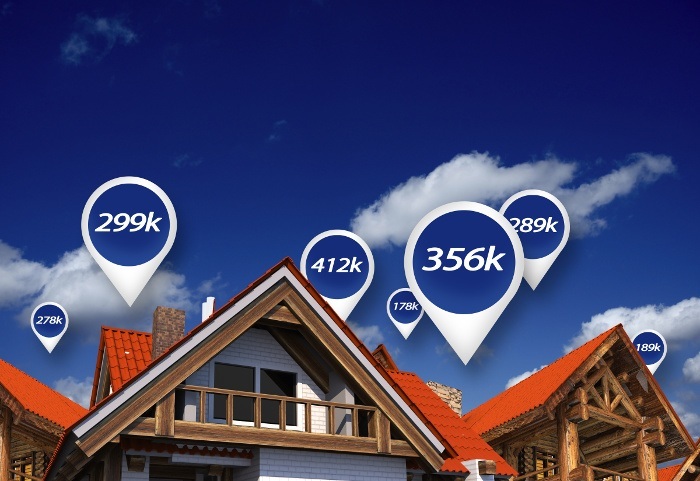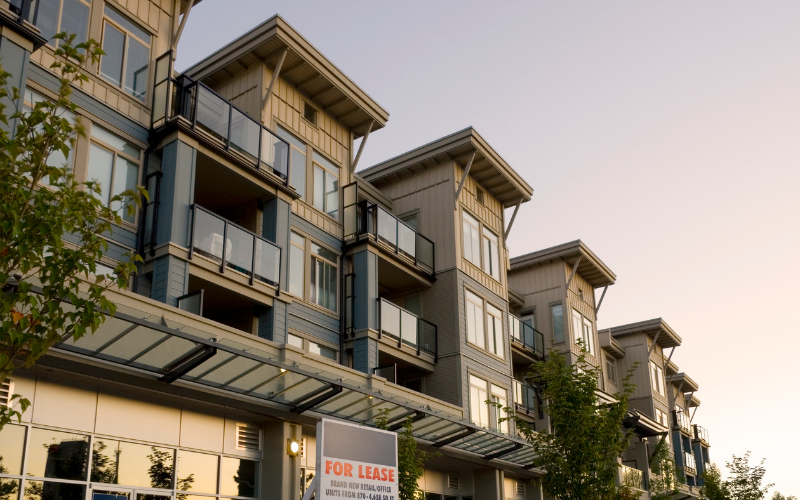 There are many Millennials who are looking for a home, and many of them are getting ready to trade up for more space. If you think you need more space, you may have more buying power than you realize. The coronavirus pandemic has led to a lot of changes, and you might be able to use the equity in your home to purchase a bigger house with more features.
There are many Millennials who are looking for a home, and many of them are getting ready to trade up for more space. If you think you need more space, you may have more buying power than you realize. The coronavirus pandemic has led to a lot of changes, and you might be able to use the equity in your home to purchase a bigger house with more features.
Why Millennials Are Looking For Bigger Homes
There are a few reasons why many Millennials are looking for bigger homes. First, the coronavirus pandemic forced many people to work from home. This meant that a lot of people, including Millennials, needed a home office. In some cases, this means looking for a home with an extra room.
In addition, many Millennials have had children during the past few years. This means they need one or two extra bedrooms, and probably another bathroom. This means moving into a home that has more space.
Millennials Can Use The Equity In Their Homes
A lot of Millennials are still cash-strapped by student loans, but they might have more buying power than they realize. Due to the skyrocketing home prices during the past few years, Millennials may have built up a lot of equity in their homes. They can tap into this equity by selling their current houses for a significant profit. Then, they can roll this profit into a bigger house with a home office, extra bedrooms, more bathrooms, and a variety of extra features.
How To Choose A New Home
Many Millennials are ready to use their newfound purchasing power to purchase a bigger house, but it is important to find the right one. Just because the house has more space doesn’t necessarily mean it is laid out properly. The bedrooms have to be the right size, particularly if their children are going to have a lot of toys. The home office also needs to be in a location where people will not be distracted while working. Finally, it might be beneficial to find a home office that can be used for more than one purpose. Some Millennials may be getting ready to go back to a physical office in the near future, and it would be beneficial to have a home office that can be used for different things.
 Many homeowners consider a fence around their property for a variety of reasons, whether it’s to keep the dog in the yard or to maintain privacy. However, the wrong fence can entirely change the look of your property and make a beautiful yard a bit of an eyesore. If you’re trying to determine what kind of fence will work for your home, here are some tips before you start to dig in the dirt.
Many homeowners consider a fence around their property for a variety of reasons, whether it’s to keep the dog in the yard or to maintain privacy. However, the wrong fence can entirely change the look of your property and make a beautiful yard a bit of an eyesore. If you’re trying to determine what kind of fence will work for your home, here are some tips before you start to dig in the dirt. Last week’s economic reporting included readings on monthly and year-over-year inflation and the preliminary reading on consumer sentiment from the University of Michigan. Weekly readings on mortgage rates and jobless claims were also released.
Last week’s economic reporting included readings on monthly and year-over-year inflation and the preliminary reading on consumer sentiment from the University of Michigan. Weekly readings on mortgage rates and jobless claims were also released. Many people rely on the price they paid for their home as a starting point for selling, but with the ever-shifting tides of the real estate market, the price paid is not always the best metric to go by. If you’re putting your home up for sale and are looking for the ideal price point, here are some ways you can arrive at a number that will keep potential buyers interested.
Many people rely on the price they paid for their home as a starting point for selling, but with the ever-shifting tides of the real estate market, the price paid is not always the best metric to go by. If you’re putting your home up for sale and are looking for the ideal price point, here are some ways you can arrive at a number that will keep potential buyers interested. Many would-be homebuyers are now considering buying a condominium instead. Condominiums may be a good option for first-time buyers who are experiencing obstacles when searching for properties that meet their budgets and other criteria. Here’s why:
Many would-be homebuyers are now considering buying a condominium instead. Condominiums may be a good option for first-time buyers who are experiencing obstacles when searching for properties that meet their budgets and other criteria. Here’s why: Owning a home can be a major investment, but it is also a significant responsibility. From time to time, issues can pop up, and it is important that homeowners do not to ignore them. Ignoring these issues can lead to significant repair bills down the road. What are some of the top issues that homeowners should not ignore?
Owning a home can be a major investment, but it is also a significant responsibility. From time to time, issues can pop up, and it is important that homeowners do not to ignore them. Ignoring these issues can lead to significant repair bills down the road. What are some of the top issues that homeowners should not ignore? If you own a home, you must make sure it is properly protected. Hazards can change throughout the year, and one of the biggest threats during the spring is the arrival of frequent thunderstorms. If your home is damaged by a severe storm, it might be covered by your homeowner’s insurance policy. You need to take a closer look at your policy to see if you have the right coverage.
If you own a home, you must make sure it is properly protected. Hazards can change throughout the year, and one of the biggest threats during the spring is the arrival of frequent thunderstorms. If your home is damaged by a severe storm, it might be covered by your homeowner’s insurance policy. You need to take a closer look at your policy to see if you have the right coverage. Last week’s economic news included remarks given by Federal Reserve Board Governor Lael Brainard and the release of the minutes of the most recent meeting of the Fed’s Federal Open Market Committee. Weekly readings on mortgage rates and jobless claims were also released.
Last week’s economic news included remarks given by Federal Reserve Board Governor Lael Brainard and the release of the minutes of the most recent meeting of the Fed’s Federal Open Market Committee. Weekly readings on mortgage rates and jobless claims were also released. The idea of embarking on home renovations may strike many homeowners as an expensive one, but there are plenty of ways that you can easily upgrade your home without spending a lot of money. If you’re looking for improvements that will truly (and frugally) improve the value of your home, here are a few do-it-yourself options you may want to consider.
The idea of embarking on home renovations may strike many homeowners as an expensive one, but there are plenty of ways that you can easily upgrade your home without spending a lot of money. If you’re looking for improvements that will truly (and frugally) improve the value of your home, here are a few do-it-yourself options you may want to consider. Many people believe that investing in real estate is something reserved only for the super-wealthy. In reality, this is not the case. Investing in real estate is a smart idea because property can generate a consistent cash stream while providing significant capital appreciation combined with tax breaks. There are multiple ways to invest in real estate, and no single path is better than the others.
Many people believe that investing in real estate is something reserved only for the super-wealthy. In reality, this is not the case. Investing in real estate is a smart idea because property can generate a consistent cash stream while providing significant capital appreciation combined with tax breaks. There are multiple ways to invest in real estate, and no single path is better than the others.